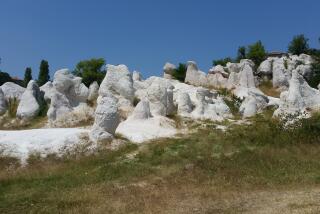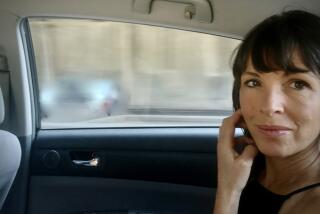The complex poetry of Diane Seuss refracts the speakerâs life through what she observes
Diane Seussâs fourth book of poems, âStill Life with Two Dead Peacocks and a Girl,â is anything but still. This collection showcases a poet who is writing some of the most animated and complex poetry today. The book, which takes its title from Rembrandtâs 17th century painting, explores seeing and the speakerâs gaze on that particular painting (and other paintings). However, ultimately, the paintings become ways to refract the speakerâs life and experiences and an exploration of the dynamism of stillness. Whatâs most magical, though, is watching Seuss take things and experiences apart and attempt to re-tie the fragments together into new wholes.
The book begins with a poem titled âI Have Lived My Whole Life in a Painting Called âParadiseâ â: âwith the milkweeds splitting at the seams emancipating their seeds/that were once packed in their pods like the wings and hollow bones/of a damp bird held too tightly in a green hand.â The book ends with a poem, âI Climbed Out of the Painting Called âParadiseâ â with the final lines of the poem referencing a fatherâs illness and early death:
...and the milkweeds, their mysterious
seam like the smile of Mona Lisa with milk on her lips, how they
opened and their seeds were carried on the wind like ships
made of feathers, and Father, wearing a back brace, who would
not be getting well and who could no longer work or play or lift me
into his arms, and I went running toward it, all of it. I wanted
my mother, and this is why I left Paradise.
The distance traveled between the first poem and the last is an unfathomable glittering distance, yet by the end of the book, the speaker (and the reader) realizes that running towards the past and leaving the past are ultimately the same thing.
âStill Life with Two Dead Peacocks and a Girlâ follows Seussâs prior book, âFour-Legged Girlâ (2015), which was a finalist for the Pulitzer Prize. Both collections use something seen to expand the possibilities of language, the speakerâs own life and mind, the reader and our culture at large.
Seuss, a professor at Kalamazoo College in Michigan, divides âStill Lifeâ into 13 sections, all brief. Each section begins with an image related to Rembrandtâs painting â the folded hands of the girl in the painting, a feather, a bowl of fruit, a dead peacockâs face with its open eyes. Some poems within each section riff off of these visual fragments. Only until the final section do we see Rembrandtâs full painting: The girl gazes longingly at two dead and contorted peacocks, one hanging upside down from a wall and another on its side, nearly upside down with blood pooling from its body. The book is a depiction of process versus product, an âimprovisation,â as Seuss calls it, as readers are brought along with her process of deconstruction and reconstruction. By the end of the book, we see how a painting (and the speakerâs life) have become so much more because we have taken the painting (and life) apart and expanded each fragment.
Although Seuss writes in her poem, âStill Life with Two Dead Peacocks and a Girlâ: âArt, useless as tits on a boar,â her book proves otherwise â that art, in particular still life art, is anything but useless. It has allowed the poet to explore art, the speakerâs rural and poor landscape of childhood, the fatherâs death, class and the role of the female in a male-dominated society. One of the seminal sections of the book includes a poem called âWalmart Parking Lotâ and explores the speakerâs childhood of riding a train to look at art by Rothko, OâKeefe and Warhol but having to return to the âsmokestacks of/Gary shooting flames into a sky already clanging orange.â As Seuss says in an interview with Poets and Writers: âOur yearning... a yearning for art represented, seemed to be in direct conflict with our circumstances â rural poverty and low expectations and something akin to isolation.â
One of the most interesting aspects of Seussâs poetry is how it showcases the speakerâs sparkling riffing mind. In an age where poetry can so easily be simplified into small one-dimensional sound bites to share on Instagram or Twitter, Seussâs poems aspire to complicate, drawing connections between seemingly unrelated things, flowing in and out and back and away from their initial triggers. In âStill Life with Turkey,â for example, the poem begins as many typical ekphrastic poems (poems written off of or inspired by art) begin, by describing what the poet sees: âThe turkeyâs strung up by one pronged footâŚ.â But how quickly the poem begins to riff about seeing: âMy eyes/are in love with it as they are in love with all/dead things that cannot escape being looked at.â The poem quickly shifts to the poetâs fatherâs death:
It is there to be seen if I want to see it, as my
father was there in his black casket and could not
elude our gaze. I was a child so they asked
if I wanted to see him. âDo you want to see him?â
someone asked. Was it my mother? Grandmother?
Some poor woman was stuck with the job.
Here, the poet begins to explore the slipperiness not only of childhood memory but also memory in general, particularly related to a traumatic event such as a fatherâs death (which lingers like a ghost throughout this entire book). After five stanzas about the fatherâs death, the poem returns to the adult speakerâs thinking, and back to the turkey, but not before riffing on a naked man:
âŚ.Now I canât get enough of seeing, as if Iâm paying
a sort of penance for not seeing then, and so
this turkey, hanged, its small, raw-looking head,
which reminds me of the first fully naked man
I ever saw, when I was a candy striper
at a sort of nursing homeâŚ
The beauty of this writing is that it showcases how when a mind tries to understand, really tries, it reaches beyond to draw connections; sometimes those connections are more obvious, but many times, understanding requires stretching and a suspension of the obvious towards the unknown. Seuss allows for those stretch connections, as if understanding a life can only be meaningful and fully lived by allowing the mind to be free.
By the end of the book, everything is larger and more vibrant â the paintings, the speakerâs life, the reader and the world. This is the brilliance of Seuss â everything is animated and complicated by her mind, a mind that has a hunch that silence holds truth, as she writes in âIt Seems at Times That Silenceâ:
âŚAnd that silence
is really not bereft of sound,
itâs only that a heavy stratum
of noise has been lifted up
to expose the resonances
belowâŚ
::
âStill Life with Two Dead Peacocks and a Girlâ
Diane Seuss
Graywolf Press: 120 pp., $16 paper
Changâs poetry book âObitâ will be published by Copper Canyon Press in 2020. Her most recent book is âBarbie Chang.â She lives in Los Angeles and teaches at Antioch University.
More to Read
Sign up for our Book Club newsletter
Get the latest news, events and more from the Los Angeles Times Book Club, and help us get L.A. reading and talking.
You may occasionally receive promotional content from the Los Angeles Times.









